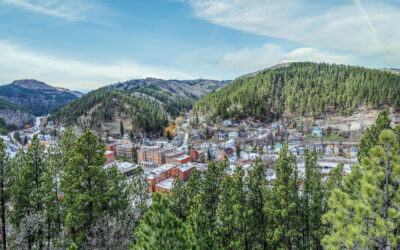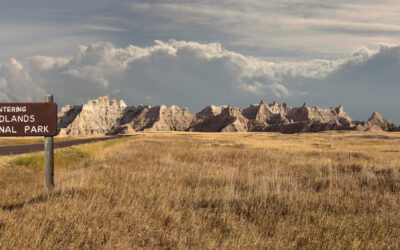South Dakota, with its expansive prairies, rugged Black Hills, and serene lakes, presents a diverse playground for hunting enthusiasts. ‘In Pursuit of the Game: Hunting Adventures in South Dakota’ takes readers through the adrenaline-fueled experiences of chasing pheasants, tracking big game, angling in the frigid waters, and sharing stories by the campfire. This article also delves into the essential role hunters play in conservation, ensuring that the state’s rich hunting traditions can be passed down to future generations.
Key Takeaways
- Pheasant hunting is a revered tradition in South Dakota, offering a thrilling experience that combines knowledge of the habitat with the right gear.
- Hunting big game in the Black Hills is a multifaceted adventure, where hunters must decide between bow and rifle, and learn the art of field dressing.
- South Dakota’s lakes offer a rich angling experience, from the excitement of fly fishing to the unique challenges of ice fishing.
- The hunting experience is enhanced by the camaraderie found around campfires, where tales are shared and vital outdoor skills are honed.
- Conservation efforts in South Dakota are crucial, with hunters playing a key role in habitat management, ethical hunting practices, and youth education.
Chasing Pheasants: A South Dakota Tradition
The Thrill of the Flush
The moment a pheasant bursts from cover in a flurry of wings is a pulse-quickening experience unique to South Dakota’s fields. The sudden flush is a test of a hunter’s reflexes and marksmanship, demanding immediate and accurate response with a shotgun. This exhilarating aspect of the hunt is what draws many to the sport, and it’s a skill that’s honed over time with patience and practice.
To increase the chances of a successful flush, hunters must understand the behavior of their quarry. Pheasants are known for their preference for certain types of cover, and recognizing these can make all the difference:
- Tall grasses provide excellent concealment for pheasants.
- Crop fields, such as corn or sorghum, offer both food and shelter.
- Wetlands are attractive for their dense vegetation and water sources.
- Brushy areas near the edges of fields are often used for roosting.
South Dakota’s landscape is a mosaic of these habitats, and each region presents its own set of challenges and opportunities. Whether you’re a seasoned hunter or new to the sport, the state’s diverse attractions like parks and lodging complement the hunting experience. With abundant big game and waterfowl opportunities, hunters can explore the unique regions of South Dakota for a variety of experiences.
Decoding the Habitat
Understanding the habitat is crucial for any successful pheasant hunt in South Dakota. Pheasants prefer areas with a mix of grain fields, grasslands, and wetlands, which provide food, cover, and water. Knowing the lay of the land can make or break your hunting experience.
When scouting for the ideal pheasant habitat, look for the following features:
- Edge habitats where different land types meet, such as where crops border grasslands.
- Water sources like rivers, ponds, or wetlands, which are essential for pheasant survival.
- Thick cover in the form of tall grasses, cattails, or shrubs, offering protection from predators.
South Dakota’s diverse outdoor activities, including hunting, are influenced by the region’s varied landscapes. The Western, Central, and Eastern regions each offer unique experiences for hunters. By familiarizing yourself with these areas, you can better plan your hunting trips and increase your chances of a successful hunt.
Gear and Gadgets for the Perfect Hunt
Equipping yourself with the right gear is crucial for a successful hunt in South Dakota. Selecting the appropriate attire and equipment can make a significant difference in your hunting experience. Comfort and functionality should be your guiding principles when gearing up for the field.
When it comes to clothing, layers are key. The weather can be unpredictable, and you’ll want to be prepared for both the chill of the early morning and the warmth of the midday sun. Opt for moisture-wicking fabrics and a good pair of waterproof boots. Here’s a quick checklist of essentials:
- Camouflage clothing for blending in
- A durable, weather-resistant jacket
- Gloves and a hat for warmth
- High-quality boots with ankle support
In addition to clothing, there are several gadgets that can enhance your hunt. A reliable GPS device can be invaluable for navigating the vast South Dakota landscape, while a high-definition binoculars will help you spot game from a distance. Don’t forget a sharp knife for field dressing and a sturdy backpack to carry your gear and any game you harvest.
Remember, while you’re out in the field, you’re not just a hunter; you’re a guest in the natural habitat of the wildlife. Central South Dakota offers not only hunting but also fishing, and cultural attractions like the State Capitol and Dignity Sculpture, making it a sportsmen’s paradise with scenic beauty. Respect for the environment and local regulations is paramount to ensure that these hunting grounds remain abundant for future generations.
Big Game Bonanza: Elk and Deer in the Black Hills
Scouting the Majestic Elk
Scouting for elk in South Dakota’s Black Hills is an exercise in patience and strategy. The region’s rugged terrain and dense forests provide the perfect backdrop for these majestic creatures. Understanding elk behavior and movement patterns is crucial for a successful hunt. Early mornings or late afternoons are prime times for spotting elk, as they are most active during these periods.
When scouting, pay attention to signs of elk presence such as tracks, droppings, and rubs on trees. These indicators can lead you to areas where elk are likely to feed or rest. Utilizing topographic maps and GPS technology can help you navigate the challenging landscape and pinpoint potential hotspots.
Here’s a quick checklist for scouting elk in the Black Hills:
- Familiarize yourself with the area’s topography
- Look for fresh signs of elk activity
- Note the wind direction to stay undetected
- Use optics to scan the area without disturbing the wildlife
Remember, the key to successful elk scouting is to blend in with the environment and minimize your impact. By doing so, you not only increase your chances of a successful hunt but also contribute to the conservation of these magnificent animals and their habitat.
Bow vs. Rifle: Choosing Your Method
When it comes to hunting big game in South Dakota, particularly in the rugged terrain of the Black Hills, choosing between a bow and a rifle is a decision that can greatly affect your experience. Bow hunting is often praised for its silence and the skill it requires to get close to the game. It’s a method that demands patience, precision, and practice. On the other hand, rifle hunting allows for longer-range shots and can be more forgiving for those new to hunting.
Here’s a quick rundown of considerations for each method:
-
Bow Hunting
- Stealth and proximity to game
- Season often starts earlier than rifle seasons
- Requires extensive practice and skill development
-
Rifle Hunting
- Longer range capabilities
- Potentially more suitable for beginners
- Greater selection of equipment and ammunition
Regardless of your choice, it’s essential to understand the regulations and obtain the proper licenses. South Dakota offers diverse hunting and fishing lodges in Western, Central, and Eastern regions, each providing unique experiences. Whether you’re nestled in a blind with a bow or perched on a ridge with a rifle, the thrill of the hunt is what brings sportsmen and women back season after season.
Field Dressing: From Forest to Freezer
Field dressing is a critical step in the journey from a successful hunt to enjoying the fruits of your labor at the dinner table. Proper field dressing not only preserves the quality of the meat but also makes it easier to transport your game. It’s a skill that requires both knowledge and practice.
The process begins with a clean and careful incision, avoiding the animal’s digestive tract to prevent contamination. Here’s a basic rundown of the steps involved:
- Ensure the animal is deceased.
- Position the animal on its back and make a shallow cut around the anus.
- Make a careful incision from the sternum to the pelvis, being cautious not to puncture the intestines.
- Remove the entrails, taking care not to spill the contents.
- Prop the body cavity open to allow it to cool and drain any blood.
Once field dressed, the game should be cooled as quickly as possible. Hanging the carcass in a shaded area or using game bags can facilitate this process. It’s essential to understand local regulations regarding the transport of game, as they can vary widely. The final step is getting your game to a freezer or processor, ensuring the meat is handled safely and hygienically throughout.
Fishing for the Fins: Angling Adventures
The Lure of the Lakes
South Dakota’s lakes are a magnet for anglers seeking a serene yet rewarding fishing experience. The state’s waters are teeming with a variety of fish species, offering something for every fishing enthusiast. Whether you’re a seasoned pro or a novice with a reel, the lakes of South Dakota promise an unforgettable angling adventure.
Before you cast your line, it’s essential to understand the types of fish that populate these waters. Walleye, perch, and northern pike are just a few of the prized catches in the region. Each species requires a different approach and bait, making knowledge of the local aquatic life crucial for a successful outing.
South Dakota offers diverse camping experiences from primitive to modern, with scenic sites and a variety of campgrounds. Fishing licenses are easily obtained, ensuring that your fishing trip is both enjoyable and compliant with state regulations. Explore different regions for unique experiences, from the glacial lakes in the northeast to the Missouri River reservoirs.
Here’s a quick guide to some of the popular fish you might encounter:
- Walleye: Often found in deeper waters; prefers live bait.
- Perch: Schools in shallower areas; small jigs and minnows are effective.
- Northern Pike: Lurks in weedy areas; responds well to spoons and live bait.
Remember, the key to a successful fishing trip is preparation. Check the local fishing reports, pack the right gear, and respect the natural habitat to ensure that these fishing grounds remain abundant for years to come.
Fly Fishing Secrets
South Dakota’s streams and rivers are a fly fisher’s paradise, teeming with trout and other game fish that challenge even the most seasoned anglers. Understanding the water flow and fish behavior is crucial for a successful catch. The state’s varied water bodies require different approaches; for instance, the swift currents of Spearfish Creek contrast with the gentle flows found in the Black Hills.
When it comes to fly selection, local knowledge is invaluable. Here’s a quick guide to get you started:
- Spring: Mayfly and caddis imitations are effective as these insects are abundant.
- Summer: Terrestrial patterns like grasshoppers and ants work well, especially near overhanging vegetation.
- Fall: Streamers can entice larger trout as they become more aggressive before winter.
Remember, the key to mastering fly fishing in South Dakota is patience and persistence. With easy license purchase options, you can explore the diverse lodges and regions that offer unique experiences throughout the state. Whether you’re wading through the pristine waters of Rapid Creek or casting along the banks of the Missouri River, each location has its own set of secrets waiting to be unlocked by the intuitive angler.
Ice Fishing: Embracing the Chill
Ice fishing is a unique winter activity that combines skill, patience, and the right strategy to outsmart fish beneath the ice. Venturing onto the frozen lakes of South Dakota requires preparation and knowledge to ensure a safe and fruitful experience. Here are some essential tips to get started:
- Dress in layers to maintain warmth and flexibility.
- Always check ice conditions before heading out; 4 inches of solid ice is the minimum recommended thickness for safety.
- Use a quality ice auger to drill fishing holes, and keep them clear of ice chips.
When targeting species like yellow perch, walleye, or crappie, understanding their winter habits is crucial. Fish tend to be less active in cold water, so patience is key. Here’s a quick guide to what you might expect under the ice:
| Fish Species | Preferred Bait | Typical Depth |
|---|---|---|
| Yellow Perch | Small jigs or minnows | 10-20 feet |
| Walleye | Jigs with live bait | 15-30 feet |
| Crappie | Plastic baits or minnows | 5-15 feet |
| Bluegill | Waxworms or soft plastics | 3-10 feet |
Remember, ice fishing isn’t just about the catch; it’s about embracing the serene, frosty environment and enjoying the solitude or camaraderie that comes with it. With these tips and the right gear, you’re well on your way to a memorable ice fishing adventure.
The Camaraderie of Campfires: Tales and Tips
Campfire Stories: The Ones That Got Away
Gathered around the crackling campfire, hunters often share tales of near-successes and the elusive trophies that slipped away. These stories, passed down through generations, are not just about the one that got away, but also about the lessons learned and the experiences cherished. Every missed opportunity is a teacher in disguise, offering insights into the behavior of game and the refinement of technique.
While the specifics of each story vary, common themes emerge about patience, precision, and the unpredictability of nature. Here’s a quick rundown of the elements often found in these campfire tales:
- The unexpected movement that gave the game away
- The split-second decision that could have turned the tables
- The environmental factors, like weather or terrain, that played a pivotal role
- The gear malfunction or personal oversight that changed the course of the hunt
These narratives not only serve as entertainment but also as informal education for fellow hunters. As you explore South Dakota’s campgrounds and attractions, such as the wildlife viewing in the Black Hills or the historic landmarks, remember that each story shared by the fireside is a thread in the rich tapestry of hunting culture.
Outdoor Cooking: Recipes and Recommendations
When the day’s hunt comes to an end, and the campfire crackles to life, it’s time to turn the day’s bounty into a mouthwatering feast. Outdoor cooking is an art that marries flavor with the primal essence of the wilderness. Whether you’re grilling a fresh catch or preparing a hearty stew, the right recipe can elevate your outdoor dining experience.
Here are a few tips to ensure your campfire cooking is both delicious and efficient:
- Preparation is key: Marinate meats at home to save time and enhance flavor.
- Keep it simple: Focus on recipes with minimal ingredients that can be mixed and matched.
- Cookware matters: Invest in a cast-iron skillet or Dutch oven for versatile cooking options.
Remember, the best recipes are the ones that bring satisfaction after a long day outdoors. Here’s a quick and easy recipe to get you started:
Campfire Chili
- 1 lb ground game meat
- 1 onion, diced
- 2 cans of beans
- 1 can of tomatoes
- Chili spices (chili powder, cumin, garlic powder)
- Brown the meat with the onion over the campfire.
- Add beans, tomatoes, and spices.
- Let simmer until flavors meld together.
This simple chili recipe can be adapted to include various types of game meat and can be easily expanded to feed a larger group. The key to successful outdoor cooking is to enjoy the process as much as the result. So gather around the fire, share stories, and savor the flavors of the great outdoors.
Safety and Survival Skills for the Wilderness
Venturing into the wild offers an escape from the daily grind, but it’s essential to be prepared for the unexpected. Knowing how to react when faced with a survival situation can make the difference between a great story and a cautionary tale.
In a wilderness survival situation, one of the most crucial tasks is to build a shelter for protection from the elements. Whether you’re dealing with extreme heat or bone-chilling cold, your shelter is your first line of defense. Finding suitable shelter locations is just as important as knowing how to construct one.
Here’s a quick list of survival essentials every outdoorsman should master:
- Fire Starting: Mastering the art of fire starting is vital for warmth, cooking, and signaling for help.
- Water Purification: Knowing how to locate and purify water can prevent dehydration and illness.
- Navigation Skills: Understanding how to use a compass and read a map can save you from getting lost.
- First Aid: Basic first aid knowledge can treat injuries and prevent further complications.
Remember, the best way to handle a survival situation is to avoid it altogether. Always let someone know your plans and expected return time, and never underestimate Mother Nature.
Conservation Efforts: Ensuring Future Hunts
Habitat Management: The Role of Hunters
The stewardship of hunters plays a pivotal role in the conservation of wildlife habitats. Hunters contribute to the balance of ecosystems by participating in regulated hunting activities, which help manage wildlife populations at sustainable levels. This management is crucial, especially in regions like Western, Central, and Eastern South Dakota, where diverse landscapes from the Black Hills to the prairies provide unique hunting experiences.
Effective habitat management involves a variety of practices:
- Land restoration to improve the natural environment for wildlife.
- Controlled burns to maintain the health of grasslands and forests.
- Invasive species control to protect native flora and fauna.
- Wetland conservation to ensure waterfowl have safe breeding grounds.
These efforts not only support the species being hunted but also the entire ecosystem. Hunters often collaborate with local conservation groups and government agencies to fund and implement these projects. By purchasing hunting licenses, tags, and stamps, hunters generate revenue that goes directly into conservation programs. Moreover, many hunters volunteer their time to habitat restoration projects, demonstrating a commitment to the lands they cherish.
The impact of these actions is significant, as they help maintain the integrity of habitats that are essential for the survival of game species. This, in turn, ensures that future generations can enjoy the same hunting, fishing, and prairie experiences that are synonymous with the South Dakota outdoor tradition.
The Ethics of Hunting: A Balanced Approach
Ethical hunting practices are the cornerstone of sustainable hunting traditions. Respecting wildlife and adhering to regulations ensure that the pursuit of game remains a responsible and rewarding experience. In South Dakota, ethical hunters are cognizant of their impact on the environment and strive to maintain the natural balance.
Understanding the importance of following regulations is crucial. These rules are in place not only to protect hunter safety but also to manage wildlife populations effectively. The South Dakota Game, Fish, and Parks department sets forth specific hunting seasons and bag limits to prevent overharvesting and to allow populations to thrive.
Here’s a quick rundown of ethical hunting practices:
- Know and respect the hunting seasons and bag limits
- Obtain all necessary licenses and permits
- Use humane methods to harvest game
- Avoid wasteful practices by utilizing as much of the animal as possible
- Participate in habitat conservation efforts
By embracing these practices, hunters contribute to the conservation of the ecosystems they enjoy and ensure that future generations can continue to participate in South Dakota’s rich hunting heritage.
Youth Education: Passing on the Tradition
Instilling a passion for hunting and conservation in the younger generation is crucial for the continuation of this time-honored tradition. Educational programs in South Dakota are designed to engage youth with the outdoors and teach them the skills and ethics of hunting. These initiatives not only cover the practical aspects of hunting but also emphasize the importance of wildlife management and the role of hunters in conservation.
To ensure a comprehensive learning experience, the programs are often segmented into age-appropriate modules:
- Ages 6-12: Introduction to wildlife species, habitats, and basic outdoor safety.
- Ages 13-18: Hands-on training in hunting techniques, firearm safety, and ethical hunting practices.
- Post-18: Advanced courses in habitat conservation, game management, and mentorship opportunities.
By participating in these programs, young hunters gain a respect for nature and the sport, ensuring that the future of hunting in South Dakota remains bright. The state’s diverse regions, from the rugged Black Hills and the stark landscapes of the Badlands to the central hunting and fishing grounds and the vast prairies of Eastern South Dakota, offer a rich backdrop for these educational pursuits. To stay abreast of the latest in hunting education and opportunities, enthusiasts are encouraged to subscribe to relevant newsletters and updates.






